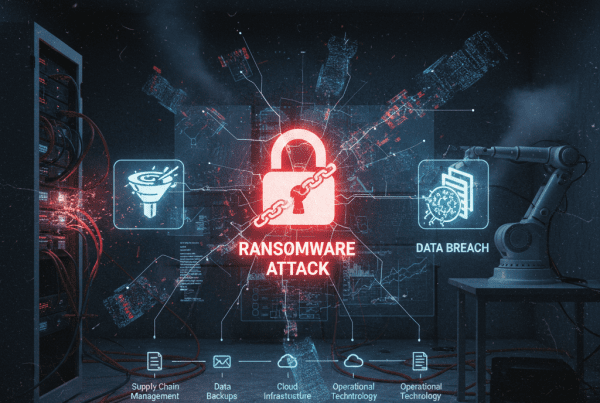Your copier still powers on. It still prints. Maybe it’s even gotten you through some tight deadlines. But lately, it’s been slower. Sometimes it misfeeds. You’ve had to call for service more often. And you’re starting to wonder: is this machine nearing the end of its useful life?
A copier reaching “end of life” doesn’t usually go out in dramatic fashion. What happens instead is gradual decline; subtle signs that it’s no longer keeping up, paired with hidden risks you may not see right away. 
This blog breaks down what copier end of life really means, how manufacturers decide when a device is EOL, the risks of holding on too long, and what smart next steps you can take.
What “End of Life” Really Means for a Copier or Printer
When manufacturers say a copier has reached end of life, they don’t mean it’s going to stop working right away. They mean it’s no longer part of their active support roadmap. That includes:
- No more firmware or security updates
- No more production of replacement parts
- Limited or no technical support
- In some cases, removal from eligibility for service contracts
Think of it like a car model that’s been discontinued. You might still be able to drive it, but if a part breaks or a new law requires updated safety features, you’re on your own.
For businesses, this support cutoff matters more than it may seem. Most modern copiers are network-connected. They store data. They integrate with document workflows and cloud apps. When updates stop, those connections can break, or worse, they become attack surfaces.

How Copier Manufacturers Decide When a Model Is EOL
Most manufacturers plan their product lifecycle around a 5- to 7-year support window, depending on the model and how widely it was adopted. After that, they phase out active production of supplies, parts, and updates.
There are a few reasons this happens:
- Technology outpaces hardware. Newer security standards, print protocols, and OS compatibility requirements can be difficult, or impossible, to retrofit into aging devices.
- Parts become harder to source. As models age, maintaining production of unique components becomes impractical. Even third-party suppliers start to dwindle.
- Demand drops. If businesses have largely moved on to newer models, manufacturers focus their attention on supporting those.
There’s also a regulatory angle. Compliance expectations around data privacy have evolved quickly. Older machines with internal hard drives may not meet newer requirements for secure data handling especially in healthcare, legal, or financial environments.
At a certain point, continuing to support older hardware compromises reliability for everyone.
5 Signs Your Copier Is Nearing the End
How do you know when your copier is at the end of its lifecycle and not just having a bad day? Here are five clear signs that it’s time to look more closely.
- You’re Calling for Service Too Often: If your copier needs attention from a technician every few months, or worse, every few weeks, it’s likely costing you more in repairs and downtime than you realize. Maintenance costs creep up slowly. A replacement part here, a roller kit there. But over time, these add up. And you’re still left with the same aging machine.
-
 Parts Are Getting Harder to Find: Delayed part shipments, discontinued SKUs, and limited stock are all signs your model is being phased out.
Parts Are Getting Harder to Find: Delayed part shipments, discontinued SKUs, and limited stock are all signs your model is being phased out. - It’s Slowing Down Your Team: Maybe your team has to wait around each morning while the copier slowly boots up before it’s ready to print. Or the scan-to-email function glitches frequently. These small annoyances are easy to brush off, until you realize they’re wasting hours every month. Technology shouldn’t be in your team’s way. If your copier is a bottleneck, it’s no longer doing its job.
- It Doesn’t Work Well with Your Current Software: As you update your operating systems, security protocols, or productivity tools, older copiers can start showing their age. Some simply can’t run updated drivers. Others lose compatibility with cloud-based workflows or mobile printing. You might find yourself jumping through hoops to make things work or relying on IT to troubleshoot issues more than they should.
- You’ve Been Notified About End of Support: Sometimes the clearest signal is also the most direct: a letter or email from your dealer or manufacturer letting you know that your model is no longer supported. This may come with a recommendation to upgrade or a note about your current service contract no longer covering that device.
Don’t ignore that notice. It’s your heads-up to plan ahead while you still have control.
Why Keeping an EOL Copier Is a Business Risk
Plenty of businesses hang onto old equipment for too long. After all, “it still works” sounds like a good enough reason..until it isn’t.
Here’s what really happens when you keep an end-of-life copier in your fleet:
- Higher Costs, Less Predictability: Old copiers become money pits. What you save by not upgrading is often lost in emergency repairs, staff time, and inconsistent performance. And when they do fail, it’s usually not at a convenient time.
- Downtime at the Worst Possible Moments: No one ever says, “I was glad my copier broke down during quarter-end reporting.” EOL devices don’t give much warning. One day it’s a minor jam. The next, it’s dead and there’s no part to fix it. In deadline-driven environments, even an hour without a working copier can throw off an entire team.
- Security Vulnerabilities: This one often gets overlooked. If your copier is connected to your network and no longer receives security patches, it’s a vulnerability. Hackers know how to exploit outdated firmware and unsecured ports. In some cases, they can even pull stored data off the device’s hard drive.
- Noncompliance Risks: For businesses in regulated industries, outdated devices pose risks to data security and compliance. Whether it’s HIPAA, GDPR, or a local privacy standard, using unsupported equipment can be a liability if data is stored improperly or isn’t securely wiped at end-of-use.
What to Do When Your Copier Is Nearing End of Life
If you think your copier might be at the tail end of its journey, don’t wait for a failure to make your move. Here’s how to navigate the transition.
- Start with an Assessment: Many Managed Print providers offer a print assessment that will give you a clear look at where your devices stand. They’ll review factors like age, usage patterns, repair history, supply costs, and software compatibility. Even if you’re not planning to replace anything right away, you’ll come away with a better understanding of what’s working, what’s not, and when it might be time to make a move.
- Consider Trade-In or Buy-Back Offers: Some vendors will offer credit for your old device toward a newer model, especially if it’s still technically functional. These programs can reduce upfront cost and simplify the upgrade path.
- Explore Leasing or Refreshing Your Fleet: Leasing a new copier often makes more financial sense than patching up an old one. Modern devices come with better reliability, built-in cloud integration, and improved energy efficiency. In many cases, monthly lease payments are comparable, or lower, than the costs you’re already sinking into repairs.
- Look Into Managed Print Services (MPS): If this is one of several devices in your office, MPS may be worth considering. It shifts maintenance, supply ordering, and lifecycle planning to an expert partner, freeing your team to focus on more valuable work. It also gives you a clearer picture of total print costs over time.
- Plan for Secure Disposal: If your copier has an internal hard drive (and most multifunction devices do), make sure it’s properly sanitized or destroyed. Some dealers offer certified data erasure or recycling services that ensure your company’s information doesn’t walk out the door.
Don’t Wait for a Breakdown to Make a Decision
There’s no alarm that goes off when your copier hits end of life. It’s more of a steady decline that shows up in extra service calls, awkward workarounds, and slower team performance.
The good news is, you don’t have to wait for it to break down completely before you act. With a little planning, you can replace your copier on your terms, with better technology, stronger security, and greater reliability.
If you’re starting to wonder whether your copier is nearing its end, ask for a professional assessment. Explore your options. Upgrading at the right time helps you avoid disruptions, stay secure, and keep things working the way they should.
About Atlantic, Tomorrow’s Office
Atlantic is an award-winning office technology and IT solutions company providing Imaging Products, IT Support, Document Management, Cybersecurity and Managed Services to small and large companies in the New York City metropolitan area, and the Greater Philadelphia and Delaware Valley.
For the latest industry trends and technology insights visit ATO’s main Blog page.

 Parts Are Getting Harder to Find: Delayed part shipments, discontinued SKUs, and limited stock are all signs your model is being phased out.
Parts Are Getting Harder to Find: Delayed part shipments, discontinued SKUs, and limited stock are all signs your model is being phased out.

